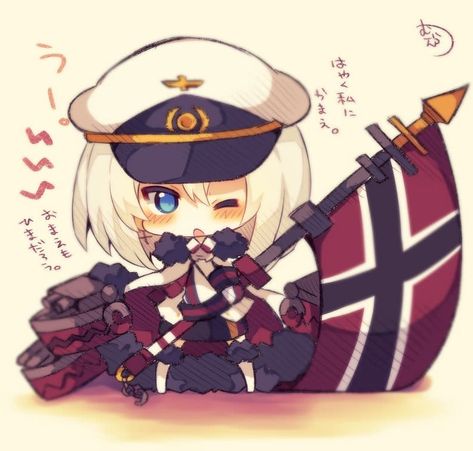History of Tirpitz
The name of the German battleship “Tirpitz” firmly entered the history of World War II. One of the two largest surface ships built in Nazi Germany, it posed a serious threat to Allied caravans. Tirpitz was indirectly responsible for the deaths of most of the PQ-17 convoy, which delivered military supplies to the USSR.

Surprisingly, the battleship participated very little directly in the hostilities. The German command, knowing about the strength of the ship, at the same time understood that this was an extremely attractive target for the submarines and aviation of the anti-Hitler coalition.
The battleship, which became the second and last ship of the Bismarck class, was launched on April 1, 1939. It got its name in honor of Grand Admiral Alfred von Tirpitz, the founder of the modern German navy.
“Tirpitz” and its “brother” “Bismarck” – giant ships of their time with a displacement of more than 40,000 tons. The main armament of the Bismarck-class battleships was eight 380-mm 38-cm / 52 SK C / 34 guns mounted in a linear-raised pattern in two-gun turrets.

In May 1941, the battleship Bismarck, together with the heavy cruiser Prince Eugen, set out on a campaign to paralyze British shipping in the North Atlantic. On May 24, the Bismarck destroyed the British battle cruiser Hood in a battle in the Danish Strait.
As a result of the retaliatory actions of the British fleet “Bismarck” was damaged by air strikes, after which it was finished off by surface ships. The battleship sank on May 27, 1941.
After the death of the Bismarck, the command of the Kriegsmarine became extremely careful about the use of the Tirpitz.
In January 1942, the battleship was transferred to the Norwegian Trondheim, from where it was to threaten the northern convoys going to the Soviet Union.
The Tirpitz did not go out to sea often, but its mere presence forced the British admirals to adjust their plans. Fearing the German giant, the Allies tried with all their might to send him to the bottom.
In the spring of 1942, the battleship, accompanied by destroyers, went out hunting, intending to intercept convoys PQ-12 and QP-8. The allies were helped by bad weather, because of which the “Tirpitz” was unable to reach the target. After the Germans realized that they had found British aircraft, the battleship was immediately ordered to return to base.
In July 1942, the Tirpitz was to become the main figure in Operation Knight’s move: the attack by a group of German ships on the PQ-17 convoy. But in fact, the battleship did not take part in it: after the Nazis learned that the British escort ships left, leaving the transports alone, “Tirpitz” went back to the base. German torpedo bombers and submarines coped with the hunt for lonely merchant ships.

On July 5, 1942, the battleship was attacked by the Soviet submarine K-21 under the command of 2nd rank captain Nikolai Lunin. The conditions of the attack were difficult, the commander of the submarine did not visually observe the defeat of the target, but, focusing on the sounds of the explosions, assumed the defeat of the Tirpitz or one of the escort ships.
In the Soviet years, the damage to the battleship during the attack of the K-21 submarine was considered reliable, but a later analysis of German documents casts doubt on this. Most likely, the torpedoes missed their target.
In September 1943, German ships led by “Tirpitz” undertook a raid on Spitzbergen. With the support of naval artillery, Hitler’s troops landed on the island. Having destroyed a number of objects on Spitzbergen, the Germans left the island, not trying to gain a foothold on it.
In the same month, the battleship, which returned to base, was attacked by British mini-submarines. Under “Tirpitz” were dropped four two-ton mines, as a result of the explosion of which the ship received serious damage and was out of action for six months.
In the spring of 1944, when intelligence reported that the “Tirpitz” was about to return to service, the British command organized an operation codenamed Wolfram.
The main striking force was the two wings of deck torpedo bombers and Fairey Barracuda dive bombers operating from an aircraft carrier.
During the air raids, 122 German sailors were killed and another 316 were injured, but the main goal was not achieved: the “Tirpitz” avoided serious damage.
During the summer of 1944, the British prepared several more major attacks on the main Nazi battleship, but they were thwarted either because of bad weather or because of the strengthening of the German air defense.

In September 1944, British pilots attacked “Tirpitz” from the Soviet Yagodnik airfield near Arkhangelsk. The result of this attack was the loss of seaworthiness by battleship, as a result of which the ship began to perform the functions of a coastal battery.
The last base point of “Tirpitz” was the Norwegian Tromsø. On November 12, 1944, British pilots on Avro Lancaster bombers dropped Tallboy bombs on the battleship, designed to destroy underground fortifications.
The battleship was hit by three Tallboy bombs: one bounced off the turret armor, and the other two pierced the armor and made a 60-meter hole in the port side. A fire broke out in the damaged powder store of tower “C”, followed by an explosion. The tower was torn off, and the ship itself fell on its side, capsized and sank. Together, the “Tirpitz” dead about 900 Nazi sailors.

The main culprit, the German command appointed the air ace Major Heinrich Erler, who was responsible for covering the battleship base.
Pride of the Third Reich, “Tirpitz” in the post-war years was cut into scrap metal.

